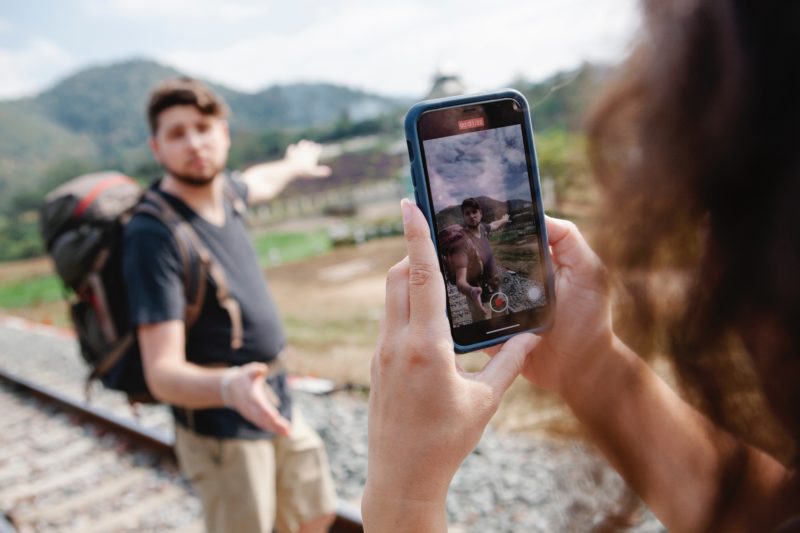It’s not news that digital marketing is now a key component of effective fundraising strategies for nonprofit organizations. In fact, a 2021 report reveals that 84% of nonprofit CMOs recognize that digital marketing must be a priority in order to stay relevant and access new channels of communication with donors.
That being said, it’s clear that nonprofit funding for robust communications teams is still limited, with most nonprofit marketing departments consisting of only two members, regardless of organization size. Typically, teams of two tend to have the bandwidth to utilize 2-3 social media or marketing channels and are only able to dip their toes into graphic design and/or video marketing, while teams of one tend to struggle as they juggle all of the various marketing needs an organization requires to expand their following and reach.
Naturally, the larger the team, the more bandwidth increases, but regardless of team size, we can say the following with certainty: digital marketing is your friend. Why? Because …
- Google search ads increase brand awareness by 80%.
- Content marketing can lead to a rate of 7.8 times higher site traffic.
- The most effective nonprofits post on Facebook and Instagram daily, utilize LinkedIn to some capacity, and send weekly emails.
- As of 2021, $5 billion had been raised for nonprofit causes on Meta platforms (Facebook/Instagram) alone.
Now, if you’re reading this blog, you clearly understand how essential digital marketing is to your organization’s success—so, let’s discuss the tactics any marketing team member or team can utilize to make amplifying your digital marketing strategy as simple as it gets.
1. Re-Strategize Your Email Marketing
Anyone in the nonprofit sector knows the power of email marketing. From monthly newsletters to eBlasts, from corporate donors to local advocates, email marketing offers a variety of ways to engage and retain supporters and donors alike.
That being said, email marketing comes with its caveats. Such as, how do we best engage prospective donors? How do we retain low-level first-time donors? How do we find and rally new supporters? Thankfully, integrated tools make this task a whole lot simpler.
Step 1: Review Your Google Analytics
Google Analytics holds a plethora of data on who your users are and how they interact with your brand. Utilize this platform to get to know your supporters on a deeper level: What age ranges are most likely to visit your site? To donate? Read blogs? Where do users reside—and are there pockets of supporters outside our typical target location? What social channels bring you the most—and least—referral traffic and donations?
Step 2: Integrate Your Strategy with Leads in Mind
If you don’t already, consider supplementing your “Donate” call to action with a “Learn More” or “Stay in Touch” call to action to begin building lists from sources outside of your donor base—leveraging the data you gleaned from Google Analytics. Create an awareness campaign on Facebook that’s focused on lead gen and target geographical areas with donor potential. Take advantage of the Google Ads grant to promote your newsletter or to collect pledge signatures (which would ideally include asking if you can add your supporters to your email list). Partner with a well-known brand in your area and run a giveaway through social media, encouraging interested parties to follow and/or sign up for your newsletter to enter.
Step 3: Segment, segment, segment!
Don’t just let your new leads sit in your MailChimp or Emma contact-list blackhole! Make sure to segment your contacts by categories, such as donation level, referral source, etc. If they’re brand new engagers, consider a drip campaign that sends them monthly eBlasts on how they can get involved over the span of 6 months. Review your emails to see who engaged with what—who’s clicking to read your blog posts, and who’s clicking to donate? Do they follow through with that donation, or should you consider targeting them with an upcoming eBlast, encouraging them to be a first-time donor?
And poof! You’ve now leveled up your email marketing strategy.
2. Take Advantage of the Donate Button

If you aren’t taking advantage of Facebook and Instagram, you could be missing out on a myriad of donors. Meta has effectively provided nonprofits with access to new donors and fundraising capabilities. Now, becoming a donor is as easy as clicking a button—literally! And the best part? Meta offers targeting across generations.
While Boomers reign supreme on Facebook, young adults—including Gen Z—have found their niche with Instagram; but remember: one size does not fit all. To effectively utilize both platforms, be sure your content is geared toward the specific person you are looking to engage with. Interested in this tactic, but unsure of where to start?
- Utilize Instagram stories—ensure 50% of which include a donate button.
- Encourage Facebook users to run birthday fundraisers supporting your organization.
- Large campaign approaching, such as Giving Tuesday or a crisis campaign? Ensure all your posts, hour after hour, include a donate button.
3. Stay Inclusive of all Donation Sizes
While the appeal of $100 donations is understandably a better-looking ROI for time spent on communications (especially in the eyes of your less marketing-savvy leadership team), by not marketing to those smaller donations, you are doing yourself a disservice. One Sight and Austin Pets Alive! break out the impact of donors’ dollars directly on their website, while I Live Here, I Give Here’s donation platform offers nonprofits, such as Out Youth, the chance to showcase how each donation level directly helps.
Take it one step further and consider a yearly campaign focused on a small dollar amount, such as a text campaign encouraging past donors to give $5 by EOD to meet XY goal.
4. Google Ads Grant
Fun fact: Google awards $10,000 in Google Ads funds to qualifying nonprofits. For those who don’t have experience with Google Ads, don’t fret—Google provides you with all the educational resources you need to be successful. They even provide nonprofits with specialized support services.
The great thing about search ads is that they provide you with the unique opportunity to get in front of all of your audiences, donors, volunteers, advocates, employees, among others, by running ads for certain search queries.
Imagine you and/or your family is wanting to adopt a dog. You go to Google and search “dog adoption near me” or “animal rescue near me.” What pops up next is a direct impact of certain organizations’ Google Ad investment: Ads lining the top and bottom of Google’s search page, crafted to look like every other search result. These search results earn priority because they are Google Ads, enhancing the chances of your listing being clicked over others who don’t invest in ad spending.
5. Video Content or Bust

No longer does video marketing need to be an all-consuming task. While important to dedicate a decent amount of time to creating inviting and enjoyable video content, you no longer need an expensive camera or editing software—just ask Brittany Broski, a TikToker known for low-quality yet witty, hilarious, and relatable content. As of July 2022, her following is over 8 million.
In today’s age, videos can be created using an iPhone and a few video editing apps—and being on-screen isn’t the only option. Canva now makes video creation easy. Not looking to invest in additional services? Well, lucky for you, Canva also has a nonprofit-specific Pro account in which you can access the site’s premium content for free.
6. Tell a Story—And Don’t Stop Sharing It
Consumers don’t just want facts and asks—they want faces and reasons. Why should they donate to your cause? Who are they helping by donating to your cause? How is your organization actually making a difference in the world, and who for? Storytelling can not only answer these questions, but it can also set the stage for effective marketing campaigns. Why? Because it’s psychological. Stories lead to humans feeling more emotionally connected to the cause, leading to more donations, volunteers, and new advocates.
But the key to truly effective storytelling in marketing? Shouting it from the rooftops. If you write a compelling blog, share it—and not just in an email, but on social media, too. Found a perfect story to engage mid-level donors during your next fundraising campaign? Include it in an eBlast and then send it via direct mail. Know someone personally impacted by your organization? Ask if you can collaborate on a video for social media as well as a press release to send to your media list.

At the end of the day, digital marketing is an essential tool for nonprofits. While traditional marketing is going to maintain an important place in your year-to-year strategy, there is no denying that the digital landscape holds unlimited potential for your organization. Integrating digital marketing, and prioritizing the methods that best target your audiences, can provide access to previously untapped opportunities for success.
Looking to enhance your digital marketing strategy to complement a more integrated approach to your current comms efforts? Bloom can help.
